What Fails An MOT Check? Answer: Badly Worn Or Damaged Tyres
Kwik Fit | Wednesday 12th May 2021 2:38pm
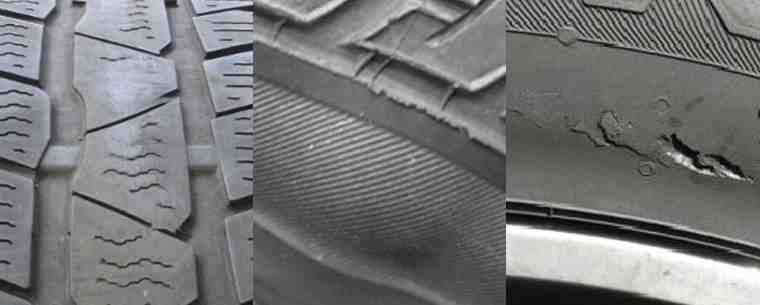
Ask yourself - when did you last look under your car’s bonnet? Can’t remember? You’re not the only one. Today, cars are typically so reliable that the majority of us don’t bother checking things like oil or coolant levels very often. That’s not good, but worse still, we assume it’s just as okay to not check our tyres at all, let alone regularly, which could be a major safety risk.
How do we know? A whopping 10% of all MOT test failures nationwide are because of faults with tyres. In our latest tyre safety article, we go through what you should look out for with tyres, so that you can avoid an MOT test fail.
Worn tyre treads
The MOT test is all about safety and road-worthiness – making sure your vehicle is not just safe for you and your passengers, but for all other road users too. Many, many criteria are checked – from brakes to axles, to driver visibility, and more. Of the 10% of MOT check fails caused by tyres, the number one issue is… worn down treads.
Tyre treads are super important. First invented by engineers at Continental Tyres in 1904, the treads are grooves in the rubber which remove water from the “contact patch” between the tyre and the road. This enables traction, providing tyres grip, which allows drivers to brake, steer, and accelerate – all the things which keep the car under control, and the people in and around it safe. If the treads are worn, the tyres are actively dangerous, which is why there’s a legal minimum tread depth of 1.6mm.
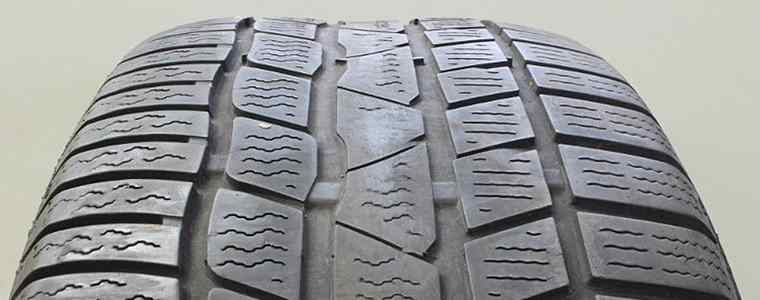
How to avoid a tread wear MOT fail
If your treads look shallow, and the tyre surface is somewhat shiny or bald, they’re worn, and so it’s time to think about a new set of tyres. Make sure you’re UK road legal by placing a 20p piece inside the tyre treads (at different places across the tyre’s width). If at any point of measurement you can see any of the coin’s outer rim, it’s not just time to think about a new set of tyres, you need to act – because they’re not only illegal, they’re very dangerous.
Two tips for prolonging the life of your tyres
- Keep an eye on your tyre pressure
If your tyres are inflated at the correct level, your tyres will wear evenly – and they’ll be safer and more fuel efficient too. - Avoid part-worn tyres
Council Trading Standards teams have reported that part-worn tyres are being sold with unsafe repairs and incorrect labelling. They’re just not worth the risk and will wear faster than new premium brand tyres, like Continentals. However, all tyres – even if they’re correctly inflated – will wear down gradually over time, depending on how (and how often) you drive.
Cuts and bulges in the tyre sidewalls
Essentially, sidewalls are the part of the tyre that withstands pressure and keeps your car stable. If you notice a tear, nick, bubble, or bulge in the sidewall, it’s normally a sign of serious damage to the tyre’s structure. It means you and those around you are at higher risk of a high speed blowout, or serious accident. It’s vital that you get the damage checked by a tyre expert straight away. If an MOT inspector sees this kind of damage, it’ll result in an immediate fail – without exception.
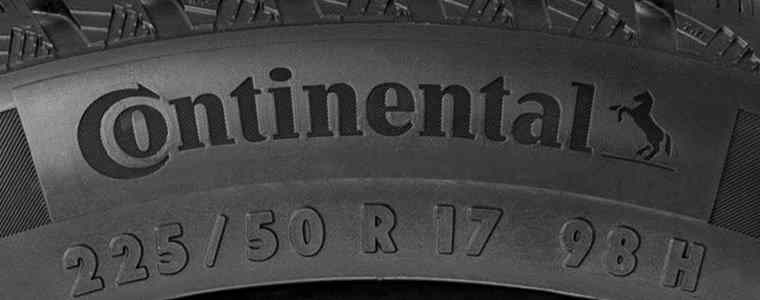
Tyre sidewall in excellent condition
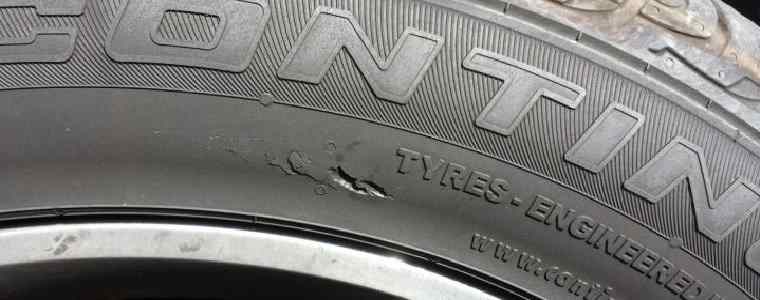
Tyre sidewall with a visible nick in the rubber
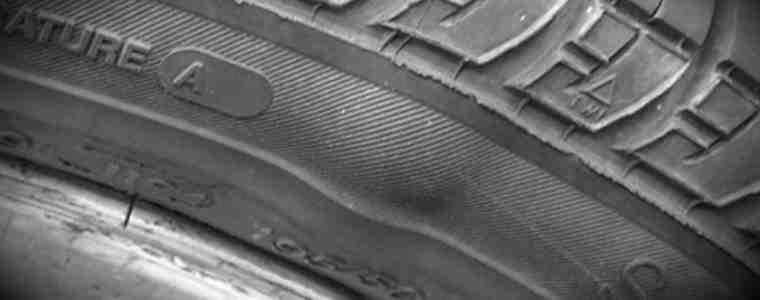
Tyre sidewall showing dangerous bulging
Five tips for avoiding sidewall damage
- Don’t come into contact with kerbs
A lot of sidewall damage starts with a rough bang or scrape against a kerb or pavement. If you regularly scuff the tyres when parking, this too can lead to long-term tyre damage issues. - Try to avoid driving into potholes
These days, it's not always possible. Bangs and scrapes in potholes can damage your tyres – and vehicle suspension too (another common reason for MOT failures). - Keep your tyre pressures right
When your tyres don’t have enough air in them, the sidewall is exposed to even greater pressure, since it has to compensate to keep your car stable. This can cause premature wear to the tyre structure, reducing its strength. - Clean off spilled oil or solvents
If you spill petrol on your tyres, or drive through some really dirty water, make sure you clean whatever’s left on the tyres off with water and washing up liquid. Prolonged exposure to solvents and oils softens the tyre compound and can damage the structure of the sidewall. - Keep an eye out for nails and other sharp objects
Inspectors will also look out for damage caused by debris. If these are left to linger they can cause lasting damage, including punctures and sidewall failures. The earlier you can take them out, the less chance of lasting damage.
TPMS Malfunction
Tyre Pressure Monitoring Systems – (TPMS) – use electronic sensors in the tyres to measure tyre pressure. If the pressures drop (or are too high), a dashboard warning light notifies the driver. What most motorists aren’t aware of is that these systems are also inspected as part of the MOT check, and if found faulty will result in test failure.
Another little known fact is that if you’ve previously changed your tyres, for example, the system needs to be reset, and certain components – including the internal batteries – will need replacing. To avoid a TPMS MOT fail, make sure you get your system serviced when you change your tyres.
Ask an expert – speak to Kwik Fit
Visual checks and regular maintenance you carry out will help prevent an MOT tyre fail. They’ll also prolong the life of your tyres, save on fuel cost, and – most importantly – keep you, your loved ones, and fellow motorists safer. If you’re unsure whether your tyres are damaged and may be at risk of failing an MOT check, get in touch with your local Kwik Fit tyre professionals. Our team will provide impartial, expert advice about tyre safety, expert fitting solutions, and much more.
Any facts, figures and prices shown in our blog articles are correct at time of publication.
Featured Articles
Is it Illegal to Drive With One Headlight?
Saturday 19th July 2025
Wondering if it’s illegal to drive with one headlight? Learn about the safety risks and penalties of illegal blown bulbs and why you should fix them promptly.
Air Con in EVs & Hybrids: Experts Answer Your Questions
Monday 30th June 2025
Does air con drain EV batteries? Can you use the air con while charging an electric car? Find out the answers to these questions & more from Kwik Fit’s experts.
Why Is Your Car Making a Noise? Fixes & Tips
Friday 13th June 2025
When your car starts making unexpected noises, it can certainly be quite disconcerting; it may be nothing to worry about, but here’s what you need to know.









